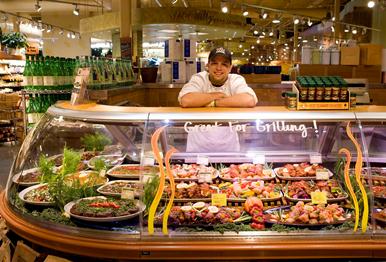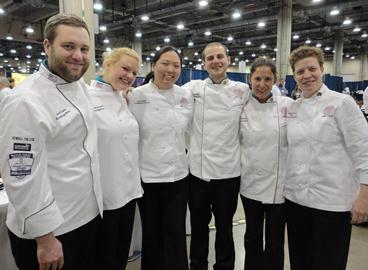Front of House: Educating Trendsetters
 Many foodservice students today have yet to experience fine dining. But it’s just as important to expose them to the several other service styles in the marketplace so they may excel in their careers.
Many foodservice students today have yet to experience fine dining. But it’s just as important to expose them to the several other service styles in the marketplace so they may excel in their careers.
By Wendy Gay, CHE
When I attended The Culinary Institute of America in the early ʼ80s, the restaurant business was divided into four types of dining: quick-service restaurants (QSRs), casual dining (brass & fern bistros), institutional dining and formal dining or “white tablecloth restaurants.” We were required to work in each of these environments. We had the diner for training in QSR and casual dining, instruction on institutional dining and three other restaurants to expose us to formal dining. By rotating through these four environments, we gained experience in each area.


 Many free materials are readily at your disposal to teach the “3 Rs” of handling excess prepared food, food scraps and used oil more sustainably.
Many free materials are readily at your disposal to teach the “3 Rs” of handling excess prepared food, food scraps and used oil more sustainably. For the second consecutive year, Kendall College School of Culinary Arts students took home gold medals as winners of the American Culinary Federation’s (ACF) National Baron H. Galand Culinary Knowledge Bowl. The students beat finalist teams from Colorado, Georgia and Pennsylvania at the event, which was held today during the 2011 ACF National Convention at the Gaylord Texan in Dallas on July 24.
For the second consecutive year, Kendall College School of Culinary Arts students took home gold medals as winners of the American Culinary Federation’s (ACF) National Baron H. Galand Culinary Knowledge Bowl. The students beat finalist teams from Colorado, Georgia and Pennsylvania at the event, which was held today during the 2011 ACF National Convention at the Gaylord Texan in Dallas on July 24. The Culinary Institute of America's (CIA) Board of Trustees announced the renewal of the contract of Dr. Tim Ryan, CMC, as president of the CIA for a 10-year term.
The Culinary Institute of America's (CIA) Board of Trustees announced the renewal of the contract of Dr. Tim Ryan, CMC, as president of the CIA for a 10-year term. Successful transitioning from hands-on learning to hybridized classes depends on faculty who can create dynamic and engaging course content delivered with students’ best interests in mind.
Successful transitioning from hands-on learning to hybridized classes depends on faculty who can create dynamic and engaging course content delivered with students’ best interests in mind. According to NPD, more adult consumers aspire to eat smaller portions in the coming year, suggesting that this healthy eating strategy will become more important in the future.
According to NPD, more adult consumers aspire to eat smaller portions in the coming year, suggesting that this healthy eating strategy will become more important in the future.